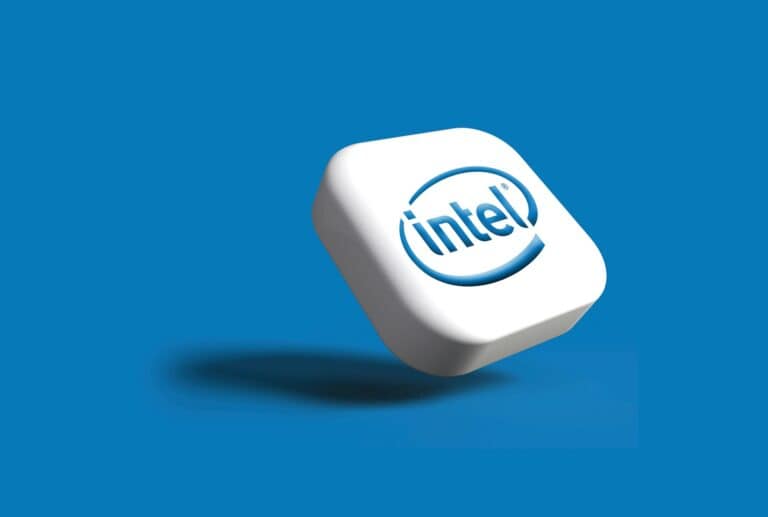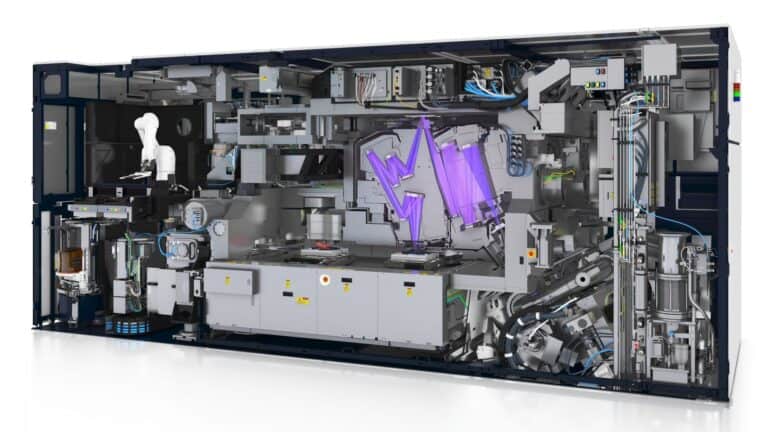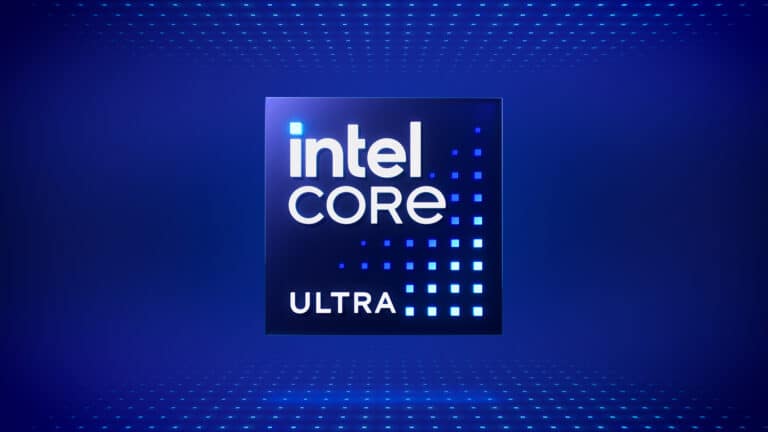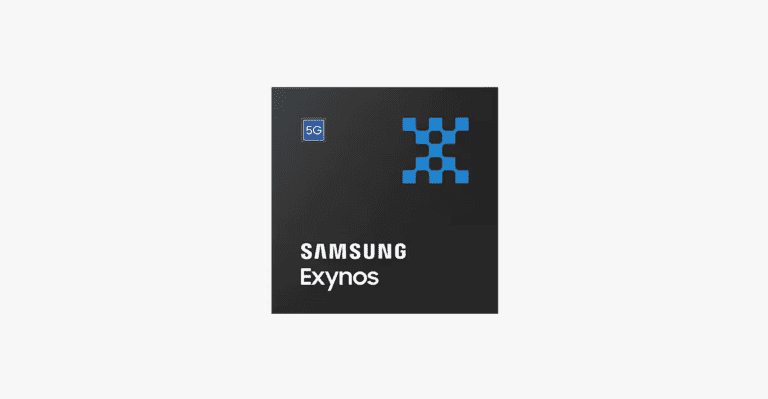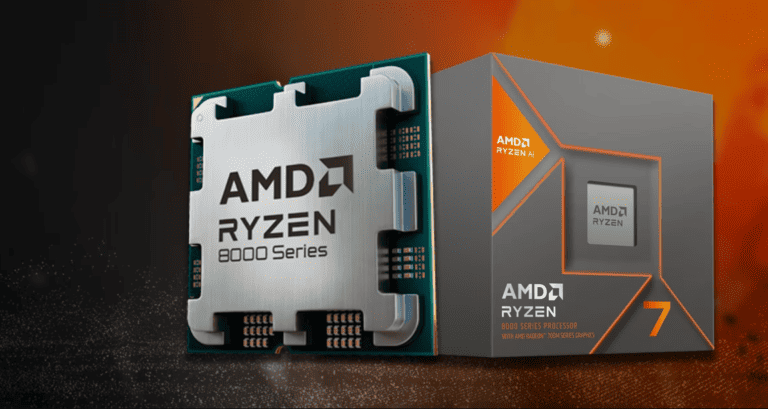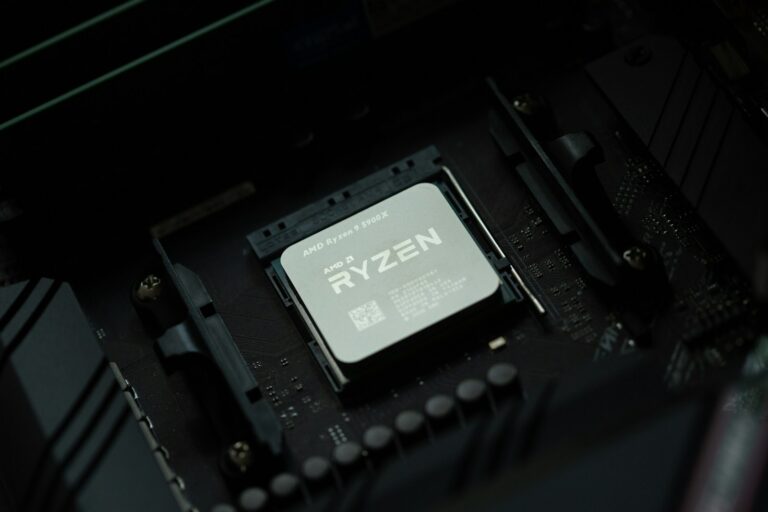Apple’s M4 chip marks a new step in the company’s custom silicon strategy. Built on a 3nm manufacturing process, it packs more transistors into a smaller space, giving stronger performance while using less power. The M4 chip combines a 10-core CPU, up to a 10-core GPU, and a 16-core Neural Engine to deliver faster computing, improved graphics, and advanced AI capabilities.
This system on a chip design integrates processing, graphics, and machine learning into one efficient unit. By balancing performance cores with efficiency cores, the M4 handles demanding tasks while keeping energy use low. It also improves graphics performance and supports real-time rendering, making it well-suited for creative and professional workloads.
Apple positions the M4 as more than just an upgrade. It represents a shift toward chips that not only raise speed but also expand what devices can handle in AI, graphics, and multitasking. This makes it a key part of the Apple silicon lineup going forward.
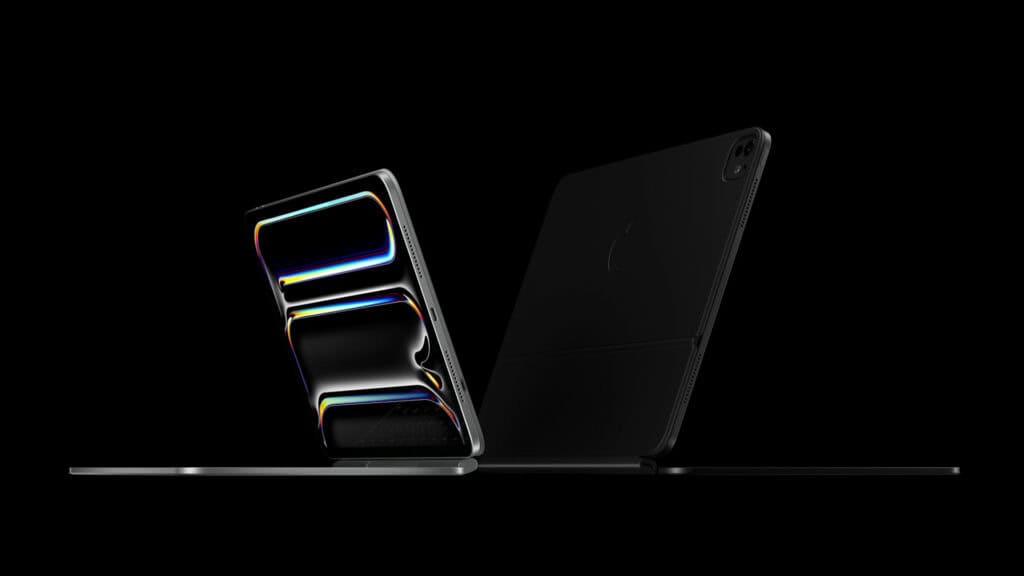
Core Features, Performance, and Innovations Explained
Apple’s M4 chip represents a significant leap forward in personal computing performance, delivering unprecedented power efficiency and capabilities that redefine what’s possible in portable devices. Built on advanced 3nm technology and featuring groundbreaking architectural improvements, the M4 sets new standards for processors in 2025.
M4 Chip Architecture and Core Design
Advanced Manufacturing Process
The Apple M4 is built on an enhanced 3-nanometer process technology, representing one of the most advanced chip manufacturing processes available (source: GadgetMates). This cutting-edge fabrication enables:
- Increased transistor density for more processing power in the same space
- Improved power efficiency through smaller, more efficient components
- Better heat management with optimized thermal characteristics
- Enhanced performance per watt ratios compared to previous generations
CPU Configuration and Performance
The M4 features a sophisticated CPU design with multiple core configurations:
Performance Cores:
- Up to 4 high-performance cores optimized for demanding single-threaded tasks
- Higher clock speeds than previous M-series processors
- Advanced branch prediction and execution pipeline improvements
- Enhanced cache hierarchy for faster data access
Efficiency Cores:
- Up to 6 efficiency cores designed for background tasks and power savings
- Intelligent workload distribution between performance and efficiency cores
- Optimized for sustained performance during extended use periods
Revolutionary GPU and Graphics Performance
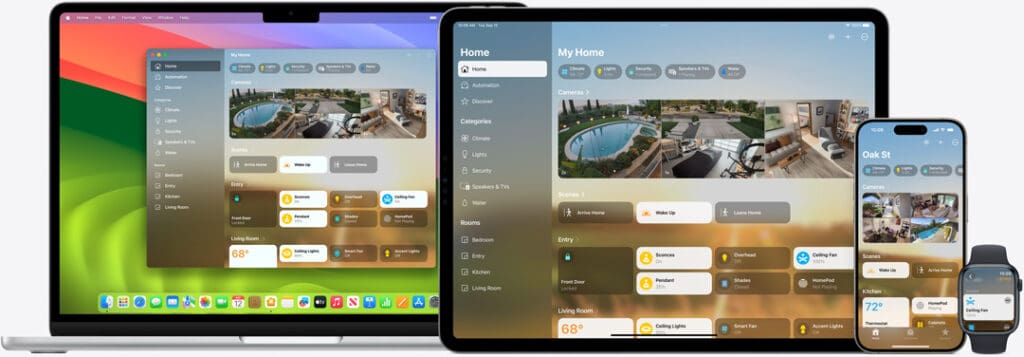
Next-Generation Graphics Architecture
The M4’s GPU represents a major advancement in integrated graphics technology (source: GadgetMates):
- Up to 10-core GPU configuration in higher-end models
- Hardware-accelerated ray tracing for realistic lighting and reflections
- Mesh shading support for more detailed and efficient 3D rendering
- Dynamic caching that adapts memory usage based on workload demands
Real-World Graphics Improvements:
- 50% faster GPU performance compared to M3 in graphics-intensive applications
- Enhanced gaming capabilities with console-quality graphics on portable devices
- Professional creative workflows benefit from accelerated video editing and 3D rendering
- Machine learning workloads see significant performance improvements
AI and Machine Learning Capabilities
Advanced Neural Engine
The M4 introduces Apple’s most powerful Neural Engine to date (source: GadgetMates):
- 16-core Neural Engine capable of 38 trillion operations per second
- On-device AI processing for enhanced privacy and responsiveness
- Improved natural language processing for better Siri interactions and text analysis
- Advanced image recognition and computational photography features
AI-Powered Features:
- Real-time language translation without internet connectivity
- Enhanced photo and video editing with AI-driven suggestions and corrections
- Intelligent background removal and object recognition
- Voice recognition and processing with improved accuracy and speed
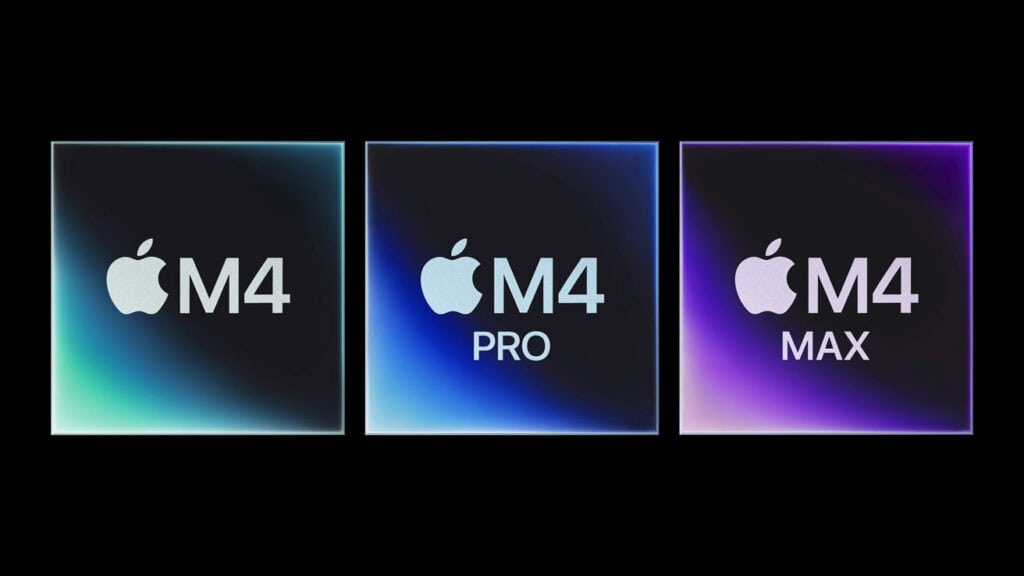
M4 vs M4 Pro vs M4 Max: Performance Comparison and Features
Apple’s M4 chip family offers three distinct performance tiers designed to meet different user needs and budgets. Each variant builds upon the base M4 architecture while adding specialized capabilities for increasingly demanding workloads.
M4 Chip Lineup Overview
M4 (Base Model)
The standard M4 chip provides exceptional performance for everyday computing tasks and moderate professional work. It’s designed for users who need reliable performance with outstanding battery life in the most portable form factors.
M4 Pro (Mid-Tier Professional)
The M4 Pro targets creative professionals and power users who need enhanced performance for video editing, software development, and multi-display setups. It bridges the gap between consumer and high-end professional needs.
M4 Max (Ultimate Performance)
The M4 Max represents Apple’s flagship processor, designed for the most demanding professional workflows including 8K video editing, 3D rendering, machine learning development, and other compute-intensive applications.
Detailed Specifications Comparison
| Feature | M4 | M4 Pro | M4 Max |
|---|---|---|---|
| CPU Cores | Up to 10-core (4P + 6E) | Up to 14-core (10P + 4E) | Up to 16-core (12P + 4E) |
| GPU Cores | Up to 10-core | Up to 20-core | Up to 40-core |
| Neural Engine | 16-core (38 TOPS) | 16-core (38 TOPS) | 16-core (38 TOPS) |
| Memory Support | Up to 32GB | Up to 64GB | Up to 128GB |
| Memory Bandwidth | 120 GB/s | 273 GB/s | 546 GB/s |
| Media Engines | 1 encode, 2 decode | 2 encode, 2 decode | 2 encode, 4 decode |
| Ray Tracing | Hardware accelerated | Hardware accelerated | Hardware accelerated |
| Display Support | Up to 2 external 6K | Up to 3 external 6K | Up to 4 external 6K + 1 internal |
| Thunderbolt Ports | 2-4 (device dependent) | 3-4 | 4 |
| Process Technology | 3nm (2nd gen) | 3nm (2nd gen) | 3nm (2nd gen) |
Performance Differences
CPU Performance Scaling
- M4: Excellent single-core performance, good multi-core for standard workloads
- M4 Pro: 40-60% faster multi-core performance than base M4, optimized for sustained workloads
- M4 Max: Up to 80% faster multi-core performance, designed for maximum throughput
Graphics Performance Hierarchy
- M4: Handles 4K video editing, moderate gaming, and creative work
- M4 Pro: 2x graphics performance of M4, suitable for professional video and 3D work
- M4 Max: 4x graphics performance of M4, supports 8K workflows and complex 3D rendering
Memory and Bandwidth Impact
The dramatic memory bandwidth differences significantly affect performance in memory-intensive tasks:
- M4: Sufficient for most applications and moderate multitasking
- M4 Pro: Enhanced bandwidth supports professional creative workflows
- M4 Max: Massive bandwidth enables extreme multitasking and data-intensive applications
Target Users for Each Variant
M4 – Perfect For:
- Students and general users seeking premium performance with excellent battery life
- Business professionals handling documents, presentations, and video calls
- Content consumers who want smooth streaming and casual gaming
- Budget-conscious buyers wanting Apple Silicon benefits at lower cost
M4 Pro – Ideal For:
- Creative professionals editing 4K video and working with large photo libraries
- Software developers compiling large codebases and running multiple development environments
- Financial analysts working with complex spreadsheets and data analysis
- Multi-display users needing extensive screen real estate
M4 Max – Essential For:
- Video professionals editing 8K footage and complex motion graphics
- 3D artists rendering detailed models and animations
- AI/ML developers training models and processing large datasets
- Audio engineers handling dozens of tracks with real-time effects processing
- Scientists and researchers running computational simulations
Real-World Performance Impact
Video Editing Performance:
- M4: Smooth 4K editing with standard codecs and moderate effect stacks
- M4 Pro: Handles multiple 4K streams, complex effects, and some 8K footage
- M4 Max: Effortless 8K editing, multiple streams, and real-time complex effects
Gaming and Graphics:
- M4: Console-quality gaming at 1440p with good frame rates
- M4 Pro: High-end gaming at 4K and professional 3D visualization
- M4 Max: Maximum settings gaming and professional rendering workflows
Battery Life Considerations:
While all three chips are highly efficient, there are practical differences:
- M4: Best battery life due to lower power requirements
- M4 Pro: Excellent efficiency for the performance level provided
- M4 Max: Good efficiency but higher power draw during intensive tasks
Choosing the Right M4 Variant
Decision Framework:
Choose M4 if:
- Your budget prioritizes value over maximum performance
- You primarily use standard productivity applications
- Battery life is your top priority
- You don’t require multiple external displays
Choose M4 Pro if:
- You’re a creative professional needing enhanced graphics performance
- You frequently work with 4K video or complex photo editing
- You need support for multiple high-resolution displays
- You want a balance of performance and efficiency
Choose M4 Max if:
- You work with 8K video, complex 3D rendering, or machine learning
- You need maximum memory capacity for large datasets
- Your workflow involves the most demanding professional applications
- Performance is more important than battery life or cost
The key is matching the chip’s capabilities to your actual workflow requirements rather than simply choosing the most powerful option available.
Memory and Storage Innovations
Unified Memory Architecture
The M4 continues Apple’s unified memory approach with significant improvements:
- Up to 32GB of unified memory in higher-end configurations
- Increased memory bandwidth for faster data transfer between components
- Intelligent memory compression to maximize available RAM
- Shared memory pool accessible by CPU, GPU, and Neural Engine simultaneously
Storage Performance:
- Faster SSD controllers with improved random and sequential read/write speeds
- Enhanced encryption with hardware-level security features
- Optimized storage management through advanced wear leveling and over-provisioning
Performance Benchmarks and Real-World Impact
Single-Core Performance
The M4 delivers exceptional single-threaded performance (source: CPU Monkey):
- 20-25% performance improvement over M3 in single-core tasks
- Significantly faster than competing x86 processors in the same power class
- Higher clock speeds enable better performance in applications that can’t utilize multiple cores
- Improved responsiveness in everyday computing tasks
Multi-Core Excellence:
- Up to 40% faster multi-core performance compared to M3
- Exceptional performance per watt maintaining efficiency while delivering power
- Consistent sustained performance without thermal throttling in typical use cases
- Professional workload optimization for video editing, coding, and creative applications
Power Efficiency and Battery Life
Industry-Leading Efficiency
The M4 chip epitomizes Apple’s focus on power efficiency (source: Windo11 Release):
- Fanless operation in many devices while maintaining high performance
- Extended battery life compared to Intel and AMD equivalents
- Intelligent power management that dynamically adjusts performance based on workload
- Minimal heat generation enabling thinner device designs
Real-World Battery Benefits:
- All-day computing for typical productivity workflows
- Extended video playback capabilities for entertainment
- Efficient background processing that doesn’t drain battery significantly
- Quick wake from sleep with minimal power consumption during standby
Connectivity and I/O Improvements
Enhanced Connectivity Options:
- Thunderbolt 4/USB 4 support with multiple high-speed ports
- Wi-Fi 6E compatibility for faster wireless connectivity
- Bluetooth 5.3 with improved range and efficiency
- Advanced display support for multiple external monitors at high resolutions
Professional Connectivity:
- Multiple 6K displays supported simultaneously
- High-speed external storage connectivity for professional workflows
- Network acceleration for faster file transfers and cloud synchronization
Software Optimization and Ecosystem Integration
macOS Integration
The M4 works seamlessly with macOS to deliver optimized performance (source: Apple Collections):
- Native app optimization for applications built specifically for Apple Silicon
- Rosetta 2 improvements for running Intel-based applications efficiently
- System-level optimizations that take advantage of the chip’s unique architecture
- Enhanced security features integrated at the hardware level
Developer Benefits:
- Unified development platform across Mac, iPad, and iPhone
- Advanced development tools optimized for Apple Silicon architecture
- Machine learning frameworks that leverage the Neural Engine capabilities
- Cross-platform compatibility for apps across Apple devices
Comparison with Previous Generations
M4 vs M1 Performance (source: CPU Monkey):
- Significant performance improvements in both single and multi-core benchmarks
- Better graphics performance with ray tracing and advanced GPU features
- Enhanced AI capabilities with more powerful Neural Engine
- Improved power efficiency despite increased performance
Evolution Benefits:
- Faster app launches and system responsiveness
- Better multitasking capabilities with improved memory management
- Enhanced creative workflows for professional users
- Future-proofing for upcoming software requirements
Who Benefits Most from M4 Technology
Creative Professionals
The M4 delivers transformative performance for creative workflows (source: GadgetPH):
- Video editors benefit from hardware-accelerated encoding and real-time effects
- 3D artists and designers experience faster rendering and modeling performance
- Photographers enjoy enhanced RAW processing and AI-powered editing features
- Music producers get low-latency audio processing with multiple tracks and effects
Developers and Technical Users:
- Software developers experience faster compilation times and smoother IDE performance
- Data scientists benefit from accelerated machine learning model training
- System administrators appreciate the reliability and efficiency for server applications
- AI researchers can leverage the powerful Neural Engine for on-device processing
Everyday Users:
- Students and professionals enjoy all-day battery life with consistent performance
- Content consumers benefit from enhanced video playback and gaming capabilities
- Productivity users experience faster app switching and multitasking
- Privacy-conscious users appreciate on-device AI processing
Future Implications and Industry Impact
Setting New Standards
The M4 chip represents Apple’s continued push to redefine personal computing (source: Windo11 Release):
- Pressure on competitors to match Apple’s performance and efficiency
- Advancement of ARM architecture in professional computing applications
- Integration of AI capabilities becoming standard in personal devices
- Emphasis on privacy through on-device processing becoming industry norm
Bottom Line
The Apple M4 chip combines higher performance, better graphics, and advanced AI capabilities with industry-leading efficiency (source: GadgetMates). This makes it ideal for users who want cutting-edge performance in a fanless or quiet device, creative professionals requiring powerful tools, and AI developers building next-generation applications.
The M4 represents more than just an incremental upgrade – it’s a fundamental advancement in how personal computers can deliver professional-grade performance while maintaining exceptional battery life and minimal heat generation. Whether you’re editing 4K video, developing machine learning models, or simply want the most responsive computing experience available, the M4 provides capabilities that were impossible in portable devices just a few years ago.
For Mac users, the M4 delivers a transformative experience that pushes the boundaries of what personal computers can achieve, making it an excellent choice for anyone seeking the pinnacle of performance and efficiency in 2025.
Key Takeaways
- The M4 chip uses a 3nm process for better performance and efficiency
- It combines CPU, GPU, and Neural Engine in one system on a chip
- It supports faster computing, stronger graphics, and advanced AI tasks
Frequently Asked Questions
The Apple M4 chip introduces faster CPU and GPU performance, stronger energy efficiency, and a more capable neural engine. It also supports advanced graphics, professional workloads, and new architectural improvements that set it apart from earlier chips.
What are the performance enhancements in the latest M4 chip compared to its predecessor?
The M4 chip uses a 10-core CPU with 4 performance cores and 6 efficiency cores. This setup increases processing speed compared to the M3. Benchmarks show faster single-core and multi-core results, which improve both everyday tasks and heavy workloads.
How does the M4 chip’s energy efficiency impact the battery life of devices?
The M4 is built on TSMC’s second-generation 3nm process. This design reduces power consumption while maintaining higher performance. Devices using the M4 can run longer on a single charge compared to those with earlier chips.
What are the key innovations introduced with the M4 chip?
Apple added a faster neural engine, more memory bandwidth, and support for advanced AI workloads. The chip also integrates improved ray tracing for graphics and wider compatibility with Thunderbolt 5 in higher-end models like the M4 Pro.
How does the M4 chip enhance graphics and computational capabilities in Apple devices?
The M4 includes up to a 10-core GPU with hardware-based ray tracing. This boosts rendering speed and visual quality in games and creative apps. It also improves computational tasks such as video editing and 3D modeling.
What improvements have been made to the neural engine in the M4 chip?
The neural engine in the M4 has 16 cores and runs faster than in the M3. It processes machine learning tasks more efficiently, which helps with features like image recognition, natural language processing, and Apple Intelligence tools.
How does the M4 chip support professional-level applications and workflows?
The M4’s higher CPU and GPU performance, combined with its memory bandwidth, allows smooth use of professional software. Video editors, 3D artists, and developers can run demanding applications without slowdown. The chip is also optimized for multitasking across large projects.


